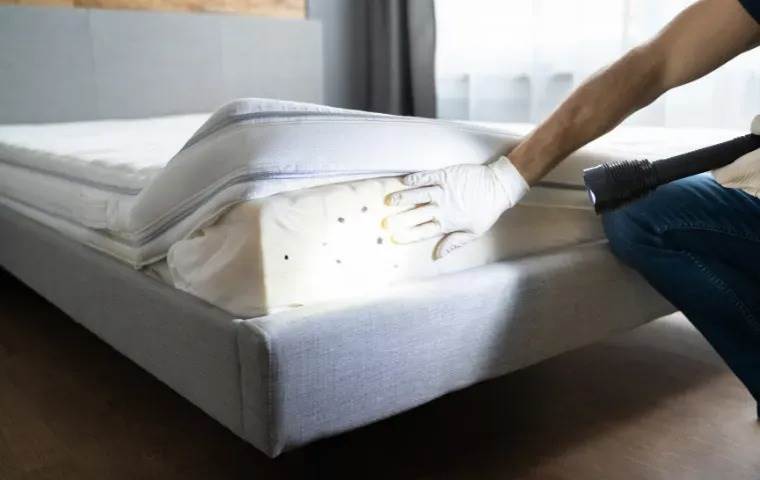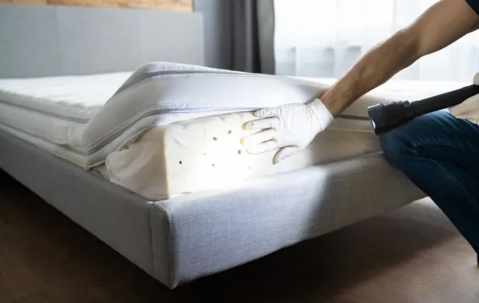Will the Dryer Kill Bed Bugs?

Bed bugs live just about everywhere: in our beds, on our furniture, and even in our clothes. If you’re dealing with a bed bug infestation, you need to prevent new bugs from showing up and get rid of bugs that have already set up shop.
You may have heard that it’s possible to heat treat bed bugs and kill them — but before you rush to the dryer, you need to know a few key details.
The simple answer is yes; the right dryer setting can kill bed bugs. Heat is indeed an effective way to kill bed bugs. However, you’ll have to make sure you use heat that’s high enough to exterminate bed bugs throughout all stages of their life cycle, including eggs, nymphs, and adults.
Key Takeaways
- Heat treatment using a dryer can kill bed bugs in all life stages. To maximize your results, make sure you dry clothes at a temperature of at least 120°F.
- Prepare your items before you launder them to keep them safe from new bugs. Then, wash and dry using the highest temperature your machines will allow.
- Homeowners can reduce the risk of future bed bug infestations by regularly monitoring problem areas and key hiding spots throughout the house.
Will the Dryer Kill Bed Bugs?
The high temperatures a clothes dryer produces can be hot enough to damage a bed bug’s body and lead to death. Heat treatment, in general, is a popular method for killing bed bugs at all stages of life.
Since dryers generate high heat for an extended period, they’re an especially easy option for eliminating bed bug eggs and adults.
To use a dryer to kill bed bugs, ensuring that infested items are exposed to high enough heat for an appropriate amount of time is key. A dryer usually needs to reach around 120°F or higher to get the job done. While eggs and nymphs are particularly vulnerable to heat treatment, adult bed bugs can be more stubborn.
Make sure you use heat treatment for a time frame that’s appropriate for the kind of infestation you’re dealing with.
How to Use the Dryer to Kill Bed Bugs
Before attempting to eradicate bed bugs with a dryer, take some time to prepare your infested items properly.
- Once you’ve identified bed bugs, start by separating any affected items. Sort them based on the level of treatment they need, if applicable. Keep your infested items separate from other clothing, bedding, or fabrics. It’s smart to place your infested items in plastic bags to separate them from clean items.
- You still have one more stop before you hit the dryer: your washer. Toss your items into a washing machine and clean them using a hot water wash cycle— the hottest you can use.
Hot Tip! Your water temperature should also be at least 120°F to kill bed bugs effectively. You can even still use your usual detergent.
- With your items cleaned, it’s time to transfer them to the dryer. Use the hottest and longest drying cycle possible (at least 30 minutes) to squash as many bed bugs as possible. Inspect the items once they’re finished to see if there are any remaining bed bugs.
- Fold and put away your items, and don’t forget to keep them separate from contaminated areas!
Alternatives to Dryer Treatment for Bed Bugs
While a dryer can be an effective method for killing bed bugs, there are other ways to manage bed bug control in your home. Combining these tactics with heat treatment can help you tackle the infestation from all angles.
- Chemical Insecticides: For areas that can't be treated with heat, pesticides might be an option. Make sure you target not only problem areas but also furniture joints and crevices in beds where bed bugs hide. Follow all instructions that come with your product to ensure you use it safely and never use outdoor insecticides in your home.
- Natural Substances: Diatomaceous earth is praised for its ability to eradicate bed bugs by dehydrating them. Sprinkle a thin layer in target areas to use it. Meanwhile, rubbing alcohol and hydrogen peroxide can be applied directly onto bed bugs, though their effectiveness and safety as a treatment are disputed.
- Freezing Items: Placing your belongings in a freezer can help get rid of bed bugs, though this requires a sustained period of exposure to low temperatures that many home freezers may not provide.
- Vacuuming: Regularly vacuuming helps reduce bed bug populations by physically removing them from surfaces. Pay special attention to potentially hidden areas. When you’re done, dispose of the vacuum contents immediately into new trash bags and dispose of them properly.
- Steam Cleaning: A heavy-duty steam cleaner can treat items that can't be laundered. High temperatures generated by steam cleaners can kill bed bugs in clutter, furniture, and mattresses.
How to Keep Bed Bugs from Returning
After successfully treating a bed bug infestation, it's key to take preventative measures and to ensure these unwelcome guests don’t make a comeback.
Furniture and Bedding
Consider covering your mattress and pillows with bed bug-proof covers designed to trap any remaining insects inside and prevent new ones from infiltrating.
Keep furniture slightly away from walls, too, as bed bugs are notorious explorers and can easily climb onto furniture in infested areas.
When traveling, inspect your luggage or backpacks thoroughly to avoid bringing any unwanted hitchhikers home. Washing clothes with high heat when you return home is another good idea.
Ongoing Inspection and Detection
Regular inspection is crucial for keeping bed bugs at bay. If you’ve dealt with bed bugs before, take some time to methodically inspect all potential hiding places, including linens, bedding, and personal items that have come in contact with an infested room.
If an infestation does start to resurge, you’ll be the first to know about it — and the first to act.
When to Call Professional Extermination Services
If your at-home bed bug treatment efforts don’t work or your bed bug problem seems to get worse with time, it’s probably time to ask for professional help.
Pest control professionals who specialize in bed bug control can identify where the problem stems from, kill existing bugs, and help you effectively prevent future bed bug problems. They might also recommend taking infested items for dry cleaning with cleaners who handle bed bug-contaminated items.
No matter what your ideal bed bug treatment ends up looking like, working with a professional takes a lot of stress and time off your shoulders.
Frequently Asked Questions
What's the quickest way to deal with bed bugs?
The quickest method for dealing with bed bugs involves professional extermination and utilizing high heat, typically above 120°F for a sustained period, which can be partially achieved through the use of a clothes dryer for bedding and garments.
Can I get rid of bed bugs by doing laundry with a specific detergent?
While regular washing can remove bed bugs from fabrics, no specific detergent has the proven ability to kill bed bugs. The high temperature of the water and dryer is lethal to the insects, not the detergent.
Should I wash all my wardrobe if bed bugs invade?
If bed bugs invade, cleaning all washable items that may be affected is advisable, using the highest heat settings suitable for the fabrics involved. This could eradicate bed bugs hidden in the folds and seams of clothing.
Will a spin in the dryer ensure my clothes are bed bug-free?
A spin in the dryer set to a high heat for at least 30 minutes can effectively kill bed bugs in clothing and other small textiles due to bed bugs' susceptibility to heat.
Can my comfy pillows harboring bed bugs be sanitized in the dryer?
Yes, pillows and other bedding suspected of harboring bed bugs can be sanitized in the dryer. Run them on high heat for at least 30 minutes to ensure any bed bugs are eliminated.
